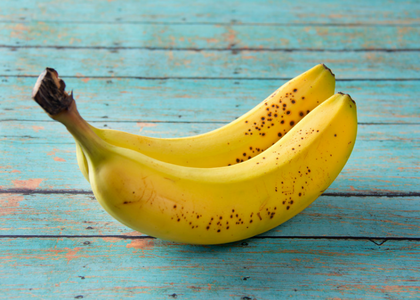
Get to Know the Glycemic Index & More
By Claire Georgiou, Reboot Naturopath, B.HSc ND
The glycemic index (GI) gives us an idea of which foods raise our blood glucose the fastest and the highest. Think of it as a guide of how certain foods effect our blood sugar levels. The GI for a food is measured by how quickly the blood sugar rises after a person eats a serving that contains 50g of carbohydrate, such as a cup of rice, or one medium bagel.
High glycemic foods are rapidly broken down into glucose once eaten and then either sent to cells to be used for energy, saved in the muscles as glycogen for later use or stored as fat.
A food’s GI depends on many factors such as how much protein, fat or fiber it contains, how ripe it is or how long it has been stored. How the food has been cooked or processed also plays a role.
For example, pasta cooked el dente has a significantly lower GI then pasta that is well cooked, while ripe fruit has a higher GI than less ripened fruit, i.e., green versus super yellow bananas. Some foods that are cooked then eaten cooled will also reduce the GI of that food due to the resistant starch changes.
Low GI foods aren’t always healthier then higher glycemic foods, for example, processed chocolate will have a lower GI then a sweet potato.
When including healthy food choices, eating a lower glycemic index diet has been associated with a lower risk for developing cardiovascular disease, diabetes, obesity and other weight related conditions and certain types of cancer.
What do I look for?
- High Glycemic Index (GI) foods are > 70
- Moderate Glycemic Index (GI) foods are 55-70
- Low Glycemic Index (GI) foods are < 55
Another important tool to consider is the glycemic load (GL), which is often considered a more useful indication for weight control and healthy blood sugar levels. The GL was designed to account for portion size and includes the GI and the overall carbohydrate content of a serving of a given food. For example watermelon, has a high GI but when consumed in a reasonable amount and considering its high water volume, the glycemic load is low.
Glycemic Load Levels
- Low Glycemic Load (GL) <10
- High Glycemic Load (GL) >20
To give you some examples a medium baked potato with no skin has a glycemic index of 98 and a glycemic load of 26 and a cup of carrot juice has a glycemic index of 43 and a glycemic load of 10.
Another factor is resistant starch. Foods that contain significant levels of resistant starch increase satiety and have a lower glycemic index overall, producing a smaller rise in blood glucose than high starch foods that contain very little resistant starch, such as baked potatoes, rice, and white bread. But when we cook these foods and let them cool again we increase the resistant starch and this can have a lower GI effect. Legumes are another low GI and high resistant starch food that effects the blood glucose levels very slowly leaving you full for longer.
| Food | Starch | RS | Glycemic Index |
| Potatoes, baked | 94% | <1% | 93 |
| White bread | 88% | 1% | 70 |
| Black beans, boiled | 60% | 5% | 30 |
| Pinto beans, boiled | 61% | 5% | 39 |
GI and Juicing
Juicing fruits and vegetables can increase the glycemic index and load, so it’s important when making fresh juices to always include low GI fruits and vegetables to balance out your juices. Adding in low-sugar vegetables will reduce the GI of you juices so when you’re including sweeter produce such as carrots, beets and fruits, it is ideal to also add in plenty of the lower GI produce such as cucumbers, peppers, celery, zucchini, leafy greens and other less sweet produce.
Another easy way to enhance the benefits of our juices is to make sure you have an array of colors particularly greens over the day and week, and to ensure that most of your juices are 80% vegetables!